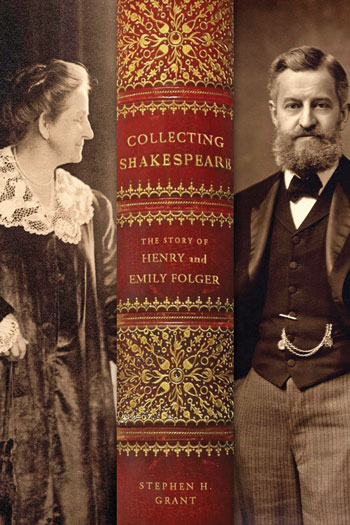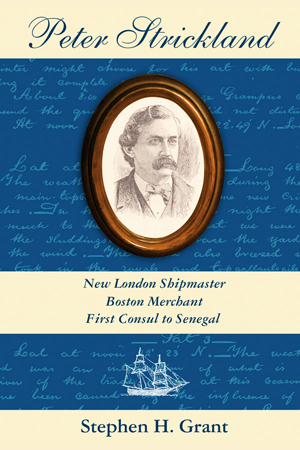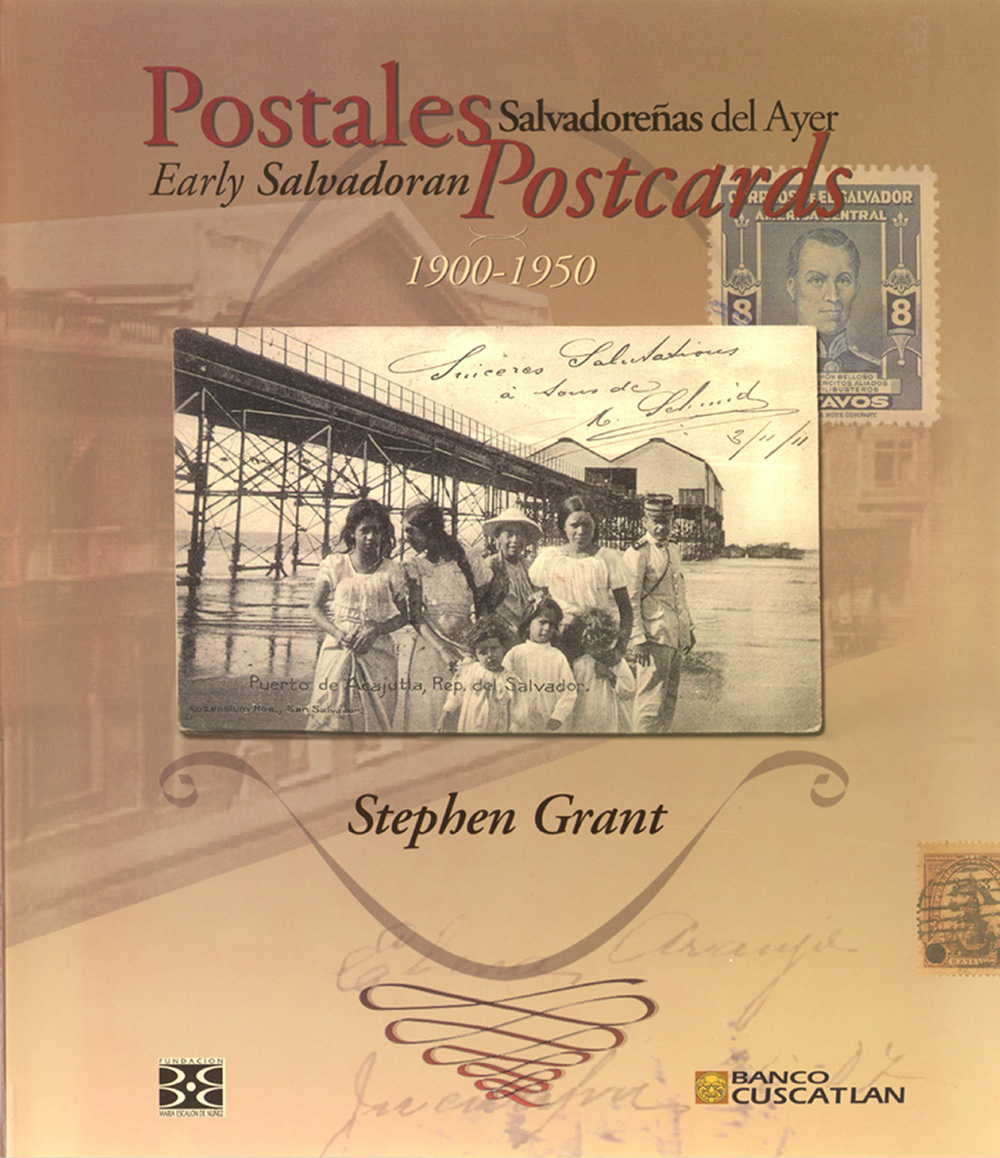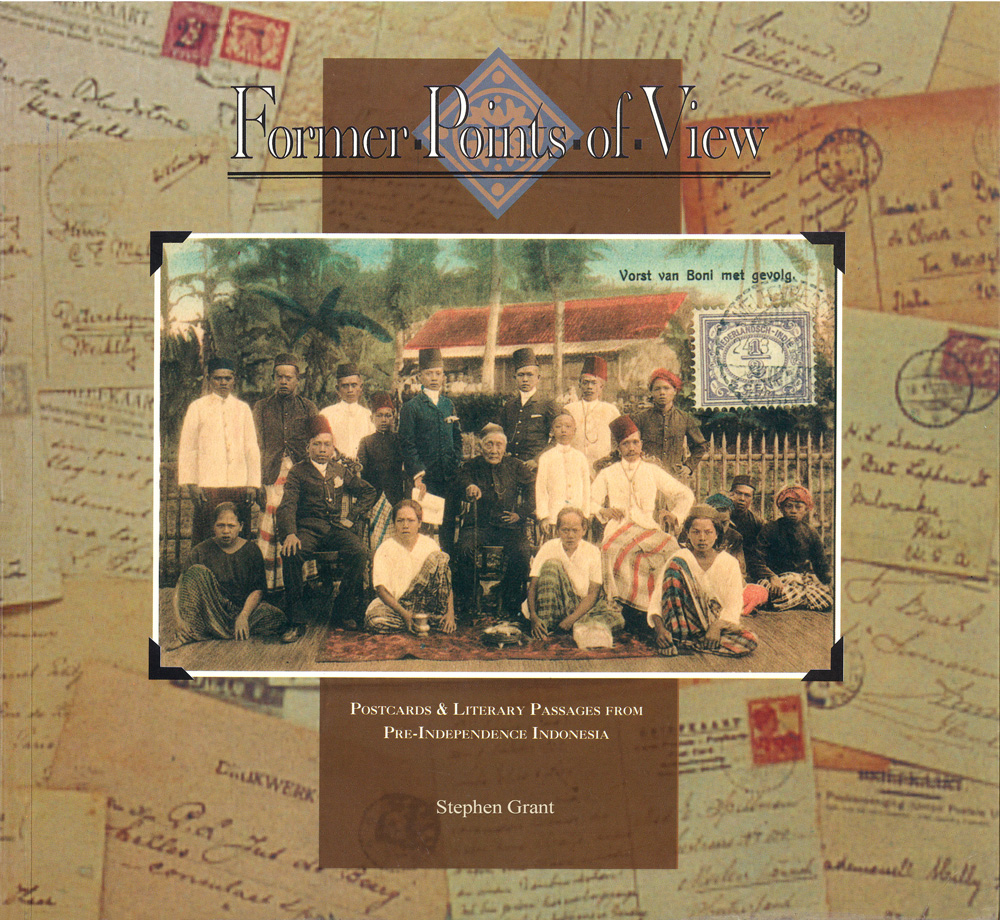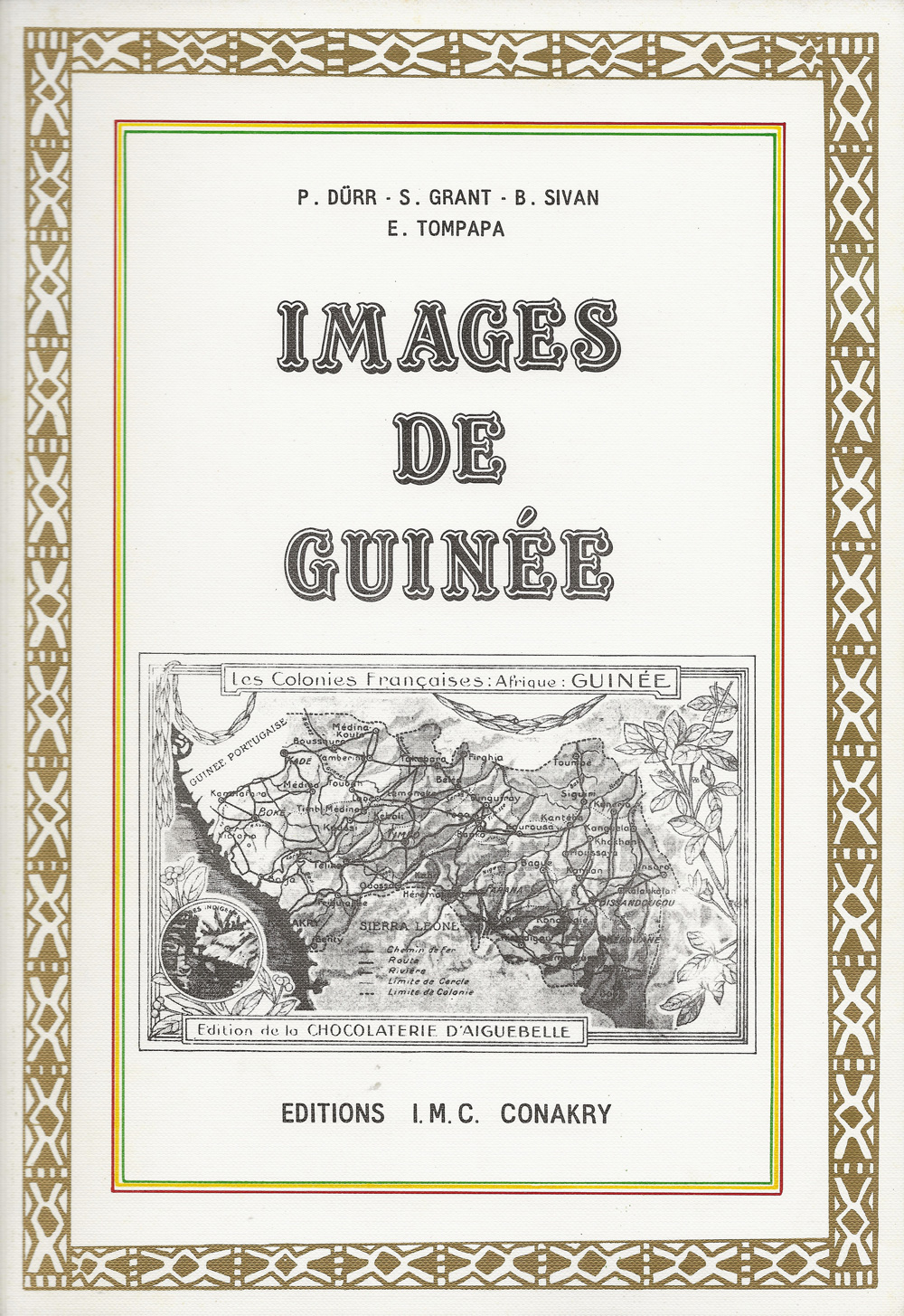Talks
COLLECTING SHAKESPEARE: The Story of Henry and Emily Folger
Book Talks by Stephen H. Grant
- 2018 Folger Book Talk at Caxton Club, Chicago
- 2017 New Books Network Interview
- The Henry Folgers at The Homestead, 1914 – 1929
- Washington Post Review by Michael Dirda
- CBS This Morning interviews on the Folger Library and its Founders
- C-SPAN broadcast of Author Talk at Politics & Prose
- WAMU 88.5 Metro Connection radio interview by Rebecca Sheir
PETER STRICKLAND: New London Shipmaster, Boston Merchant, First Consul to Senegal
Book Talks by Stephen H. Grant
- Library of Congress
- Channel Islands Maritime Museum, Oxnard CA
- Town Hall Goree Senegal
- Maritime Museum New London CT
- West African Research Center, Dakar, Senegal
- Connecticut College
- Foreign Service Institute
- Alliance française, Washington DC
- Senghor Foundation, Dakar, Senegal
- Smithsonian Institution
- University of Massachusetts
Postales Salvadoreñas del Ayer/Early Salvadoran Postcards
Interview and Book Talks by Stephen H. Grant
A TV interview in Spanish with Stephen H. Grant
when his book, Early Salvadorian Postcards, came out
THE POWER OF A POSTCARD
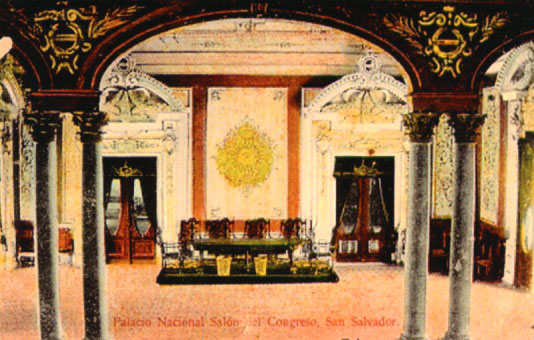
Listen to the audio
The hand-tinted postcard depicts the Blue Room of the National Palace in San Salvador, El Salvador. Under the title on the card is the handwritten date, July 12, 1912, that the postcard was sent from San Salvador to Havana, Cuba. This room is where the Salvadoran National Assembly deliberated and presidents were sworn in.
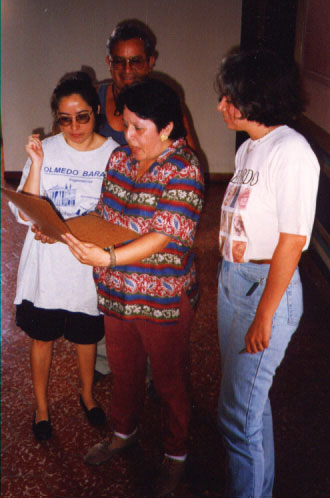
Listen to the audio
When I heard that this historic room was being restored, I made a high-resolution digital enlargement of this card I had acquired from a French postcard dealer to show to the crew. They were preparing plaster and mixing colors but they had no clear idea of probable colors a century or so before. You can see the astonishment on the face of a crew member when she looked at this very picture. The power of a postcard was in the utility to help inspire restoration efforts in an historical edifice.
§
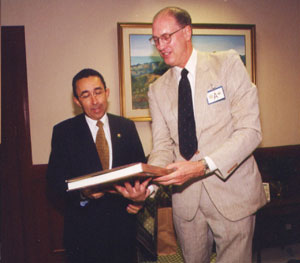
Presenting a copy of my book to the Salvadoran vice-president, Carlos Quintanilla Schmidt.
§
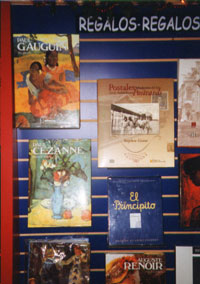
Illustrious company for my book in a San Salvador book shop: next to Cezanne, Gauguin, and “the Little Prince.”
FORMER POINT OF VIEW: Postcards and Literary Passages from Pre-Independence Indonesia
Book Talks by Stephen H. Grant
THE POWER OF A POSTCARD
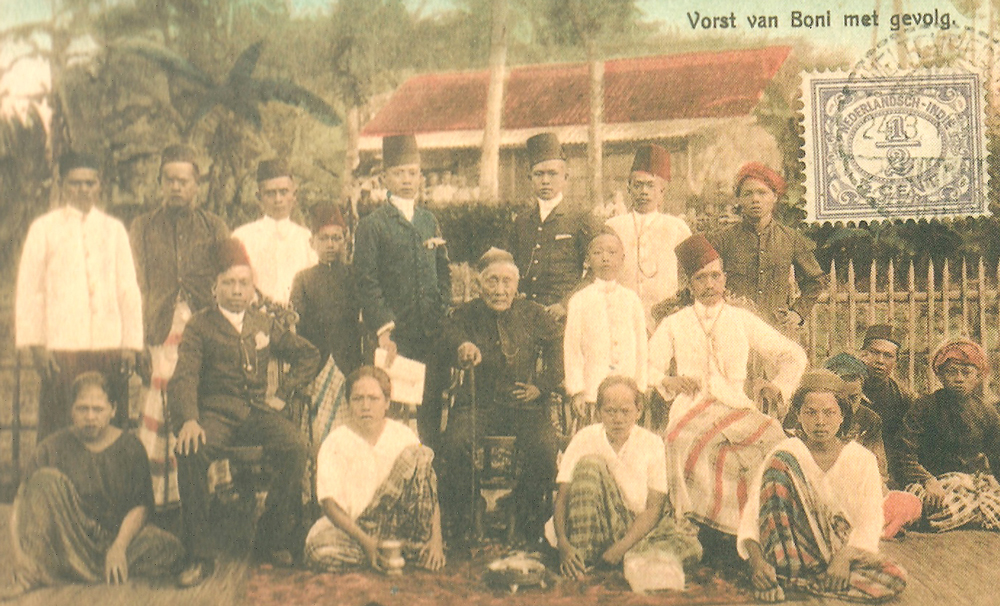
Listen to the audio
Look at the carefully-posed family gathering in the postcard I chose to display on the above book cover. It is the ruler of Boni and his retenue from the island of Sulawesi. Even a carpet has been hauled outside for the occasion! The patriarch, seated in the middle, belongs to the Bugis Kingdom in the Dutch East Indies, later to become Indonesia. The English expression “boogieman” meaning a terrifying specter comes from the Indonesian word “bugis.”
Listen to the audio
After my book was published and I was giving a book talk in Jakarta on the island of Java, a member of the audience asked me: “do you know the significance of how the four ladies sitting in front have positioned their knees?” I had to admit my ignorance. “The one with the left knee in the air is the only one unmarried.”
The power of a postcard was in the meaningful detail obvious to someone initiated into that ethnic tradition and totally lost on a foreigner like me. I hastened to rewrite that section of my commentary for a second edition of my book, which has not yet seen the light of day.
§
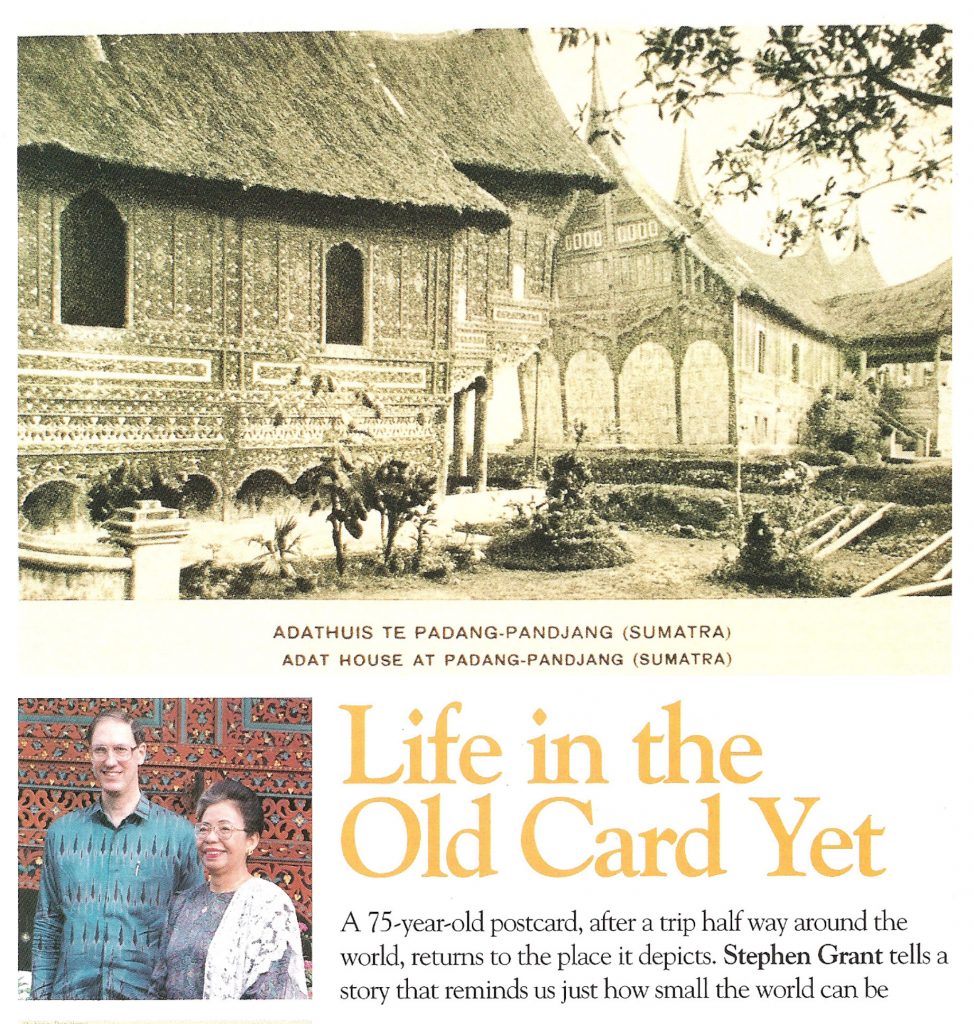
Listen to the audio
I took a pack of old Indonesian postcards to my first Indonesian language lesson in Bandung, as a means of developing vocabulary. My teacher Ibu Leila Hasyim leafed through them, picking out a word here and a word there to teach me. Then, before a card of a large residential building, she froze. “Rumah ini, rumah saya,” she gasped, leaving the room in a dash. She returned with a framed picture removed from her living room wall. “This house is my house!” The skin on her arm showed goose flesh as she explained that this brightly painted wooden adat (traditional) house had been built by her family in Padang Pandjang, central Sumatra in the 1870s. Although she possessed photos of her house in the 1950s, she had never seen a picture of it with a thatched palm roof. She knew that, starting in the early 1930s, a zinc roof had been put on. I gave her the old card, and several months later visited her in her family home.
“How small the world can be” shows the power of a postcard. The story was written up in the March, 1994 issue of the in-flight magazine, GARUDA.
CONNECT

